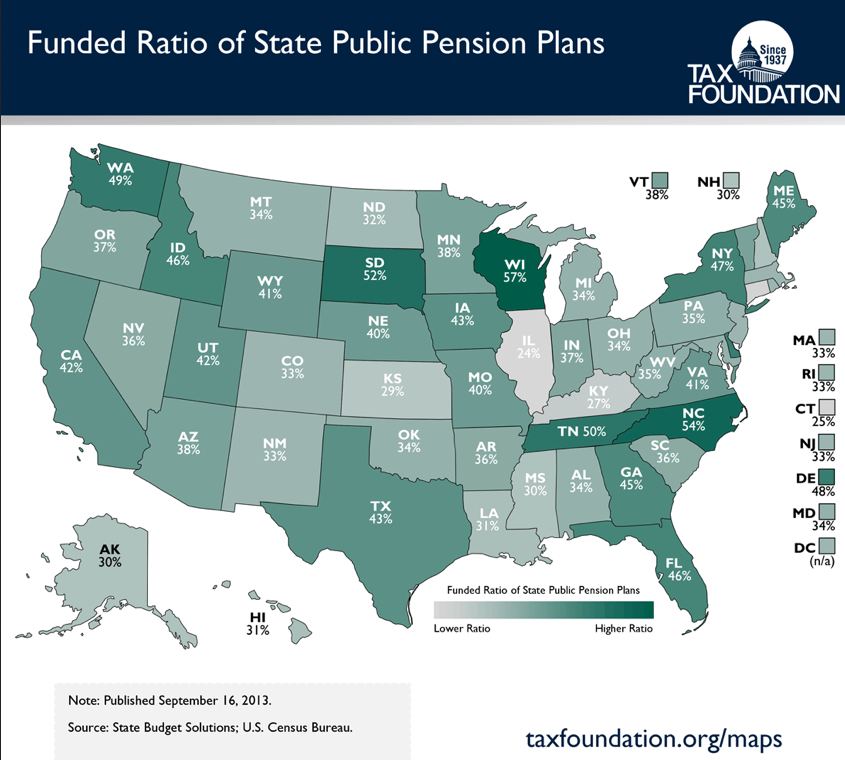The Tax Foundation has published a new map comparing the 50 states on their funding of state public pension plans. North Carolina is thankfully in the top with 54 percent, only coming in second to Wisconsin, which is at 57 percent. Many states started their pension plans as a defined benefit model of retirement; when the employee is paid a lifetime annuity based on the years of service and final salary. This is the case for most North Carolina state employees.
Some states have changed this to a defined contribution model, and it has been argued North Carolina should change as well. This model is where the employee owns and controls an investment account. The argument for this shift is affordability. Many of the states in the country have unfunded pension plans, which is evident from the commonality of the low 30 percent figure found across the country.
The Tax Foundation’s report states:
Much discussion has occurred in recent years to estimate how underfunded they are: the estimates start at $1.3 trillion and go up from there. The difficulty is that calculating the amount depends on your estimate of future rate of return. Most plans themselves project they will earn 7 to 8 percent on their investments, and critics say that is too optimistic. The organization State Budget Solutions this month produced one such estimate, using a 3.2 percent rate of return (the 15-year Treasury bond yield rate). This calculates to public employee pension plans having only 39 percent of the assets they need to cover their promised payments—a $4.1 trillion gap.


